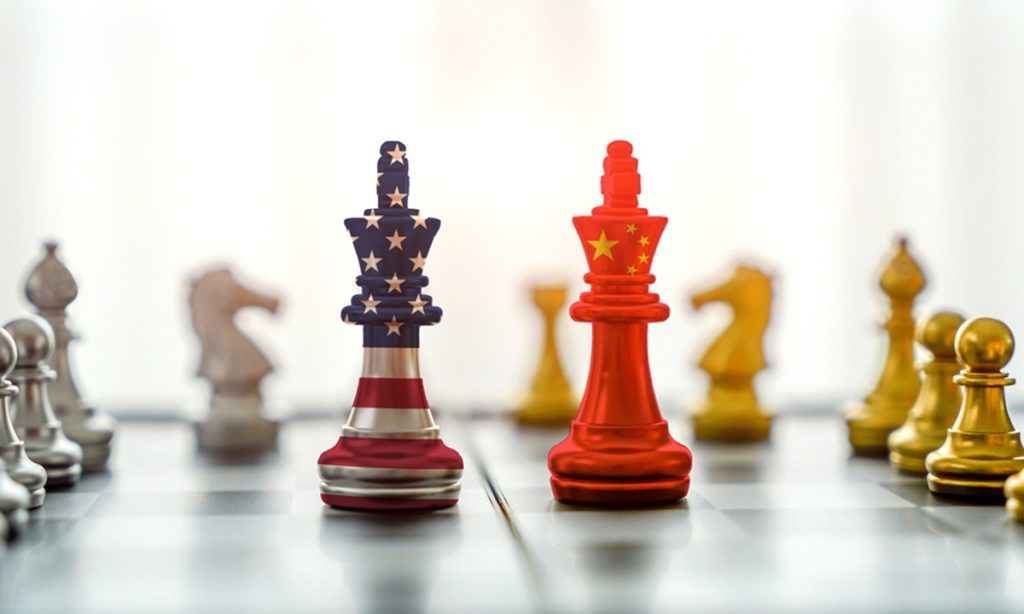Witness to history: Chinese nationals in Israel come face-to-face with war, express hope for peaceful world

Editor's Note:
The attack by Hamas and Israel's retaliation since Saturday have reportedly left more than 1,600 dead and thousands wounded on both sides with other thousands of injuries, Associated Press reported Tuesday. Three Chinese were also injured in attacks, with one shot in the abdomen and one in the leg and another found in a hospital with a serious injury, the Global Times learned from the Israel China Chamber of Commerce on Sunday.
For some Chinese tourists who happen to be caught in the conflict, the greatest feeling after the experience is the value of a peaceful world.
This story is a part of the Global Times' series of "Witness to history," which features first-hand accounts from witnesses who were at the forefront of historic moments. From scholars, politicians and diplomats to ordinary citizens, their authentic reflections on the impact of historical moments help reveal a sound future for humanity through the solid steps forward taken in the past and the present.
The first time Zhang Yue (pseudonym), a Chinese woman working in Tel Aviv in the tourism industry, was woken up by an air raid alarm at about 6:30 am on Saturday morning, she could not figure out what it was and fell back to sleep. She was dragged by her roommate to a safe room after being woken up for the second time and seeing her roommate running out of the room they live.
"'What happened?' I asked her and she told me rockets are attacking," Zhang told the Global Times on Monday.
"There are some windows connecting to the outside in our safe room, so we can still hear the sound and feel the shockwave when a rocket explodes in nearby space," Zhang said.
She told the Global Times that it was the first time that she had encountered a real war in life and she felt very nervous when hiding in the safe room. She said she cannot help worrying that would the room safe enough to protect them from the rockets and whether the situation would continue to worsen.
The Israelis in the safe room hugged Zhang and comforted her. But Zhang noticed many were also nervous. Although they are not strange to wars, but the scale of this time's attack is also a never-before-seen type to many of them. "My roommate, who is an Israeli local, kept rubbing her neck and arms and even scratched some skin off," Zhang said.
Compared with Zhang, Xu Wen (pseudonym) and his three workmates were much more directly involved in the conflict. Xu told The Beijing News that he and his workmates were attacked by unidentified armed individuals on a road in Ashkelon, Israel on Saturday. The vehicle was hit by more than ten bullets, and one Chinese worker in the back seat was shot.
Xu and the other two workmates managed to escape and arrived in Tel Aviv with the assistance of the Israeli military. The injured worker is currently receiving treatment in the hospital and is out of danger.
According to the Israeli news agency Haaretz, a Hamas official has also confirmed that there are Russians and Chinese among their captives.
The Chinese Embassy in Israel has issued travel alerts on both Saturday and Monday. Mao Ning, the spokesperson for the Chinese Foreign Ministry, stated on Monday that the embassy and its office in Palestine are in constant communication with Chinese nationals in these areas. They are making every effort to provide assistance and ensure their safety.
Full of uncertainty
During the intense rockets attack on Saturday, Zhang said they have to hide to the safe room every one or two hours. But the situation gradually calmed down in central and northern Tel Aviv since Saturday night. "I lived in Ramat Gan [in eastern Tel Aviv] on Sunday night. I heard two explosions between 11 and 12 pm, but sounded like it was far away," Zhang said.
People have been going out to purchase essential goods on Monday. Zhang's friends working in the airport also went back to work.
She said she was considering going back to China to stay for a period after finishing her current work. "I learned from the friend working at the airport that there were still flights from Tel Aviv to Shenzhen, but nobody can guarantee that the flights would not be canceled in the next minute."
"Everything is still unknown," she said.
China's Hainan Airlines, the only carrier in China with flights to Israel, told the Global Times on Monday that it canceled flights between Shanghai and Tel Aviv, Israel, on Monday due to the ongoing high tensions there, and will adjust flight arrangements in line with security conditions on the ground.
The airline has three direct flights between China and the country, which depart from Beijing, Shanghai and Shenzhen, operating twice a week on each route.
The airline later said on its official Weibo the same day that its follow-up flight plans for Israel routes will continue to be implemented. There has been no adjustment for the time being in an effort to maximize and ensure the normal travel of passengers.
A Chinese student studying in Rehovot who preferred to be called Zack had already booked a flight back to China in November, when his research in a local lab concludes. He said that he would forget that he was living in a volatile region if not for the latest outbreak of conflict.
Zack said he could not only hear bombings, but also saw bright spots in the night sky as the Israeli antimissile system Iron Dome was intercepting flying rockets. "I encountered a round of fighting in this May when I came to Israel. But it was only scattered attacks. This time was totally different. The rockets are like fireworks exploding in the air," Zack said.
But Zhang's daily life remains undisrupted. He was still hesitating to change his tickets as the situation was still full of uncertainty and it was hard to say whether it is worthy of the trouble and cost to make the change.
Hope for peace
Many Chinese travel agencies have canceled trips to Israel amid the escalated conflict there, including Tongcheng Travel, GZL International Travel Service and Spring Tour. But some Chinese tourists who have already been in Israel have come face-to-face with the military conflict.
"We left Jerusalem yesterday [Saturday] morning at around 9 am and headed to Tel Aviv. Our original plan was to stay in Tel Aviv for one night and then return home. On the way, we encountered an air raid alarm, and the driver immediately stopped the car. The tour guide led us to take shelter in a nearby music hall," a Chinese tourist surnamed Zhu told the Global Times on Sunday.
Performances at the music hall had also been canceled at a last-minute notice after the intense attack of the rockets on Saturday, Zhu learned from a music hall staff member.
Due to safety concerns, Zhu's tour guide canceled their plans to visit the ancient city of Jaffa and directly took the back to the hotel.
Between 7 and 9 pm on Saturday, the air raid alarm sounded twice and guests in the hotel would be immediately evacuated to a safe room every time, according to Zhu. "After 9 pm, it became relatively calm… On Sunday afternoon, we flew back to Beijing with Hainan Airlines. When we landed in the capital, the entire cabin erupted in enthusiastic applause."
Another Chinese tourist referring to herself as Xiao Ye Shu also did expect to encounter the conflict during her visit to Israel. In a post of her in Little Red Book (Xiaohongshu) - a popular lifestyle sharing and purchasing decision-making platform, on Sunday when she arrived at the Tel Aviv Ben Gurion Int'l Airport and was ready to return to China, she says, "Life has to move on. I wish more for a peaceful world after going through all of this."








